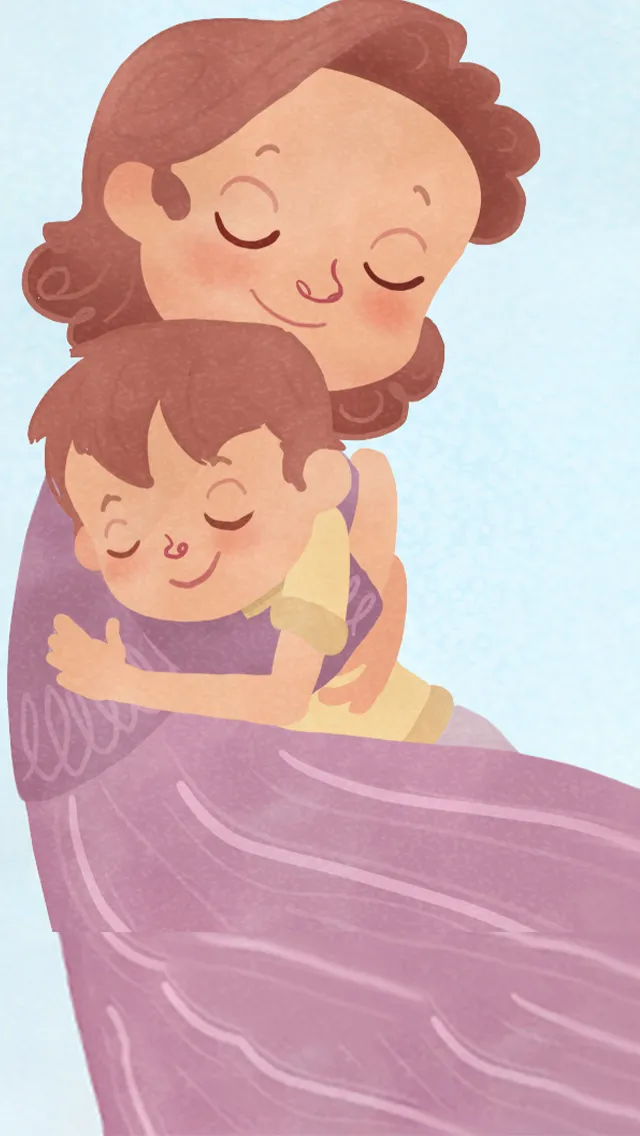Engaging kids with behavioral challenges in fun, structured activities can help them manage emotions, develop social skills, and build self-confidence.
Here are 15 at-home activities that support kids with behavioral issues by promoting focus, emotional regulation, and positive interaction.
1. Massages
Massages offer children numerous benefits, supporting their physical and emotional well-being.
Physically, massages can help reduce muscle tension, improve circulation, and promote relaxation, which is particularly helpful for active kids or those experiencing growing pains.
Regular massages can also boost the immune system by increasing lymphatic flow, helping children stay healthier.
A great resource to help your child manage their emotions is the story “Earl the Feisty Squirrel” on the Storybook app, which is perfect for teaching self-control and patience.
This story guides kids to recognize and manage their frustration, all while sharing a relaxing massage.🐿️💖
%25201.12.46%25E2%2580%25AFp.m..webp)
Not only does it help them learn about emotional regulation, but it also strengthens your bond as you share this calming moment together.
2. Reading
Reading together can be a calming way to connect. Books with positive messages can help kids explore emotions and develop empathy.
Choose stories that encourage patience, kindness, and self-awareness.
This activity can be particularly helpful in the evening or as part of a structured after school activities that promotes relaxation.
3. Active video games
Games that involve physical movement, like dance or sports games, are a great way to let kids burn off extra energy while staying inside.
They also improve coordination and can help with impulse control as kids follow directions, making it a beneficial addition to impulse control activities for kids.
4. Board games
Playing board games builds patience, turn-taking, and strategic thinking.
Games like Candy Land or Chutes and Ladders teach kids how to handle wins and losses, fostering resilience and social skills.
It’s also a great way to bring the family together on a rainy day.
5. Bubbles
Blowing bubbles encourages deep breathing, which can be calming.
Kids can chase and pop bubbles, releasing energy in a playful way that supports emotional regulation.
It’s also easy to incorporate as a fun break during thanksgiving activities during festivities to keep younger kids entertained.
6. Make play dough
Creating and playing with play dough is a tactile activity that encourages creativity while promoting relaxation.
The hands-on nature of this activity helps kids channel their energy positively, reducing stress and frustration.
These activities are versatile and can also be adapted as rainy day activities for families.
7. Emotion charades
This game involves acting out different emotions, such as happiness, sadness, or anger, for others to guess.
It’s a fun way for kids to recognize and express emotions, which supports emotional intelligence and communication skills.
8. Music
Listening to or playing music can have a calming effect on kids.
Rhythmic activities, such as clapping or dancing along, help with focus and self-regulation.
Playing an instrument or singing can also be a positive outlet for self-expression.
9. Simon Says
This classic game requires kids to listen carefully and follow instructions only when prompted by “Simon Says.”
It’s an engaging way to improve impulse control, listening skills, and the ability to follow directions, making it a valuable addition to any set of impulse control activities.
10. Whisper Challenge
In this activity, kids take turns whispering a phrase to each other, passing it down the line.
It’s a fun and humorous way to encourage listening skills and cooperation, as kids practice focusing on auditory cues.
It’s perfect for rainy days activities when indoor activities are needed.
11. Listening to Nature
Have kids sit quietly and focus on the sounds around them, whether it’s birds chirping or the wind blowing.
This activity promotes mindfulness, calming kids while helping them connect with their surroundings, and it can be a simple way to bring some calm into a busy day.
12. Guess the Sound
Play a variety of sounds and ask kids to identify each one.
This activity improves auditory discrimination and focus, as kids listen closely and match sounds to everyday objects or animals.
It’s a great fit for rainy day activities and can even be themed around different seasons.
13. Starfish breathing
Teach kids a simple breathing technique by having them trace their hand while breathing in and out.
Moving from finger to finger, kids can calm themselves, helping with emotional regulation and reducing anxiety.
It’s also a nice way to introduce a calming activity into a busy after-school schedule.
A helpful resource to teach your child how to manage anger is the story “Deflate Your Anger” on the Storybook app, ideal for guiding them through calming techniques.
This story helps children recognize and release their frustration in a healthy way, while you share a relaxing moment together. Not only does it promote emotional balance, but it also turns bedtime into a peaceful and reflective routine. 🌿💆♀️
%2525205.32.15%2525E2%252580%2525AFp.m..webp)
14. Yoga
Yoga encourages mindfulness, body awareness, and relaxation.
Simple poses like Child’s Pose and Tree Pose help kids manage stress and find balance.
Practicing yoga regularly can improve concentration and patience, making it a great way to prepare for family gatherings, like Thanksgiving.
15. Feelings chart
A feelings chart allows kids to identify and express their emotions visually.
This tool helps them develop emotional awareness, giving them a way to communicate their feelings, which supports self-regulation and reduces frustration.
It can be a helpful part of a consistent after-school routine that includes emotional check-ins with each other.
How can kids do behavioral therapy at home?
Praise and rewards for good behavior can motivate kids to continue behaving well.
Simple rewards like stickers, extra playtime, or a favorite activity work well as incentives.
Use role-playing to practice positive behaviors and responses in different scenarios.
Social stories help kids visualize and understand appropriate ways to handle specific situations, improving their social skills and decision-making.
How do you deal with bad behavior in children at home?
Trust your instincts and choose discipline methods that align with your values.
If a certain approach feels more natural or effective for you, it’s more likely you’ll stick with it consistently.
Focus on reinforcing good behavior rather than only punishing bad behavior.
Praise and rewards for appropriate actions encourage children to repeat them, fostering a more positive dynamic.

Written By
Entrepreneur mum. I created Storybook: Bedtime Stories the #1 app in over 90 countries. I have been able to help families with the app and through my social media influence. I also created a Facebook group with over 12,000 moms where we support each other.
References




.webp)



.webp)
